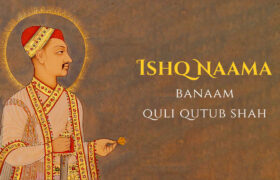Shahr Naamah Banaam Kolkata
I stand partitioned, bombed, starved. I am revolutionary, but stagnated too. I refuse to grow, yet I do. I choke; I breathe; I live on.


I stand partitioned, bombed, starved. I am revolutionary, but stagnated too. I refuse to grow, yet I do. I choke; I breathe; I live on.

Traced back to antiquity, that is even before the Puarnas, this story was narrated for the sake of entertainment during the exile of the Pandavas.

Quli Qutub Shah loved his flora and fauna, his people, and himself; he adored his romantic icons and eulogised them in his poetry.

Shankara consumed poison to save humanity as Manto did to salvage life from its ugliness and literature from its sweet sermons. Manto was indeed the Neelkanth of Urdu fiction.
Enter your email address to follow this blog and receive notification of new posts.